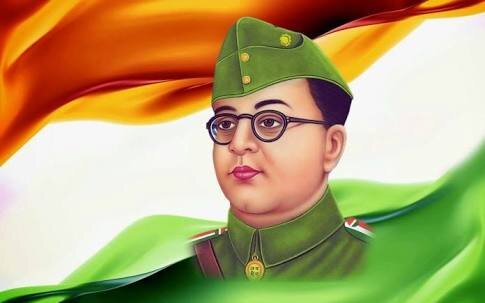Indian History
Subhash Chandra Bose
- 25 Jan 2019
- 6 min read
The Prime Minister inaugurated the Subhash Chandra Bose museum at Red Fort to mark his 122nd birth anniversary on 23 rd January 2019.
A Brief History
- Subhash Chandra Bose was twice elected President of the Indian National Congress, (1938-Haripur and 1939-Tripuri) the country’s most important political force for freedom from the Raj or British rule.
- Owing to political differences, he resigned from the Congress Presidentship in 1939 and organised the All India Forward Bloc a faction within the Congress in Bengal. The purpose was to consolidate the political left and major support base in his home state Bengal.
- In Calcutta, Bose organised mass protests and was arrested. He was later put under house arrest from where he escaped. He went to Germany via Afghanistan.
- However, in 1943 Bose lost hope that Germany could be of any help in gaining India's independence. He then turned to Asia where he finally came at the helm of the Indian National Army (INA).
- INA found support among expatriate Indians and under its aegis Bose formed the Azad Hind government which came to produce its own currency, postage stamps, court and civil code. It was recognised by Axis states.
- While his memory is still held in high esteem in India, in the West Bose is much less revered, largely because of his wartime collaboration with the Axis powers.
- During the final two years of the war, Bose with considerable Japanese backing- led the forces of the Indian National Army into battle against the British.
Azad Hind
- In 1940’s the major inspiration for carrying on a relentless struggle against Britain came from Subhas Bose’s adventures abroad.
- Bose had set up an Indian Legion in Berlin in 1941, but developed difficulties with the Germans when they tried to use it against Russia, and decided to go to South East Asia.
- He reached Japanese-controlled Singapore from Germany in July 1943, issued from there his famous call, ‘Delhi Chalo’, and announced the formation of the Azad Hind Government and the Indian National Army on 21st October 1943.
- The link with the old revolutionary tradition was emphasized by giving a post of honour in the government to Rashbehari Bose, who had been living in exile in Japan since 1915.
- Despite all his differences with Gandhiji, Bose did not forget to ask for the blessings of the ‘Father of the Nation’ while starting his enterprise.
- Indian prisoners of war in Japanese camps provided a ready recruiting ground for the I.N.A., which was able to rally about 20,000 out of the 60,000 prisoner of wars, and financial aid and volunteers came from Indian trading communities settled in South East Asia.
- The I.N.A. was essentially non-communal, with Muslims quite prominent among its officers and ranks, and it also introduced the innovation of a women’s detachment named after the Rani of Jhansi.
- Between March and June 1944, the I.N.A. was in action on Indian soil, besieging Imphal (Manipur) along with Japanese troops in a campaign which ended in total failure.
- The Japanese collapse in 1945 made the I.N.A. men prisoners again, while Bose mysteriously disappeared, allegedly killed in an air-crash which some still believe to have been faked.
- In November, 1945, a British move to put the I.N.A. men on trial immediately sparked off massive demonstrations all over the country.
- Even more significant was the probable link between the I.N.A. experience and the wave of disaffection in the British Indian army during the winter of 1945-46, which culminated in the great Bombay naval strike of February 1946 and was quite possibly one of the most decisive reasons behind the British decision to make a quick withdrawal.
Contribution of Bose
- The INA revealed Subhash Bose’s greatness as a military leader and an organizer too. One of the INA Brigades advanced with the Japanese army upto the frontiers of India. The Indian national flag was hoisted in Kohima (Nagaland) in March 1944.
- However with the change of fortune in the war and the retreat and defeat of the Japanese the INA collapsed. The role of INA had far reaching influences on the Indian political scene.
- When the stories of their remarkable courage and sacrifice came to the knowledge of the Indian people at the end of the war, the nation came under a wave of revolutionary upsurge.
- The British Government could realise that patriotism for Indians was greater than their service to a foreign power.
- In spite of his principle of violence Subhash Chandra Bose’s grand scheme of India’s liberation and the high idealism through INA movement inspired the people of India in an unprecedented manner.




